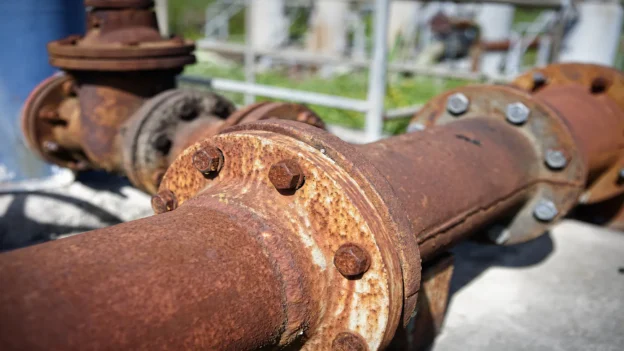Table of Contents
Industrial problem
Corrosion occurring in the support areas of pipelines is a serious problem. Supports can be of various types, from simple support brackets to clamp supports or welded sacrificial pads.
The non-destructive testing play a key role in the inspection of these supports. However, to perform a conventional ultrasonic inspection in such an inaccessible region (i.e. the supports), it is necessary to lift the pipes, which is undesirable due to the risk of stressing a pipe already weakened by corrosion. In addition, this would imply a complete shutdown of the operation.
Although various non-destructive testing (NDT) techniques are available for this type of inspection, accurate quantification of wall loss depends on the nature and extent of corrosion, and success has been variable depending on the technique employed.
HOMC as a total solution
A new concept has been developed for enhanced corrosion inspection in the support region of pipelines. This technique uses short-range guided ultrasonic waves through higher-order mode clustering, called HOMC (Higher-Order Mode Clustering). The method has been verified in multiple real sites and in round robin tests (tests performed by different teams or laboratories under similar conditions, but in different locations or operated by different technicians).
The guided ultrasonic waves (circumferential or axial modes), once generated, are reflected or transmitted from corrosion and other internal features of the pipe. The inspection can be performed from the accessible part of the pipe and could be implemented as an in-service inspection, without the need to empty the pipe.
HOMC guided waves are not affected by the point of incidence of the probe. Accurate estimation of wall loss is performed independently of signal amplitude, based on time delay alone. This is complemented by cross-sectional depth profile mapping and full inspection coverage. The method employs two probes in transmit-receive mode, along with appropriate scanning procedures, with sensitivity for both shallow and severe, near-fault losses.
The performance of this technique has been validated in multiple tests on pipe supports, demonstrating high reliability over a wide range of sizes, from 2-inch diameter pipes to flat plates with thicknesses between 3 and 20 mm, and wall losses between 20 % and 80 %, with extremely accurate sizing precision.
Applications of the technique have expanded to Trunnions, Scabbing, Corrosion under wrapping, Riser Clamps, Welded Supports, Bund Wall Crossings, Low-Flow Corrosion in Pipes. Validate Results of estimated wall loss at field deployments have been very accurate.
This article was developed by Escon Dhvani International LLC and published as part of the fourth edition of Inspenet Brief magazine December 2024, dedicated to technical content in the energy and industrial sector.

